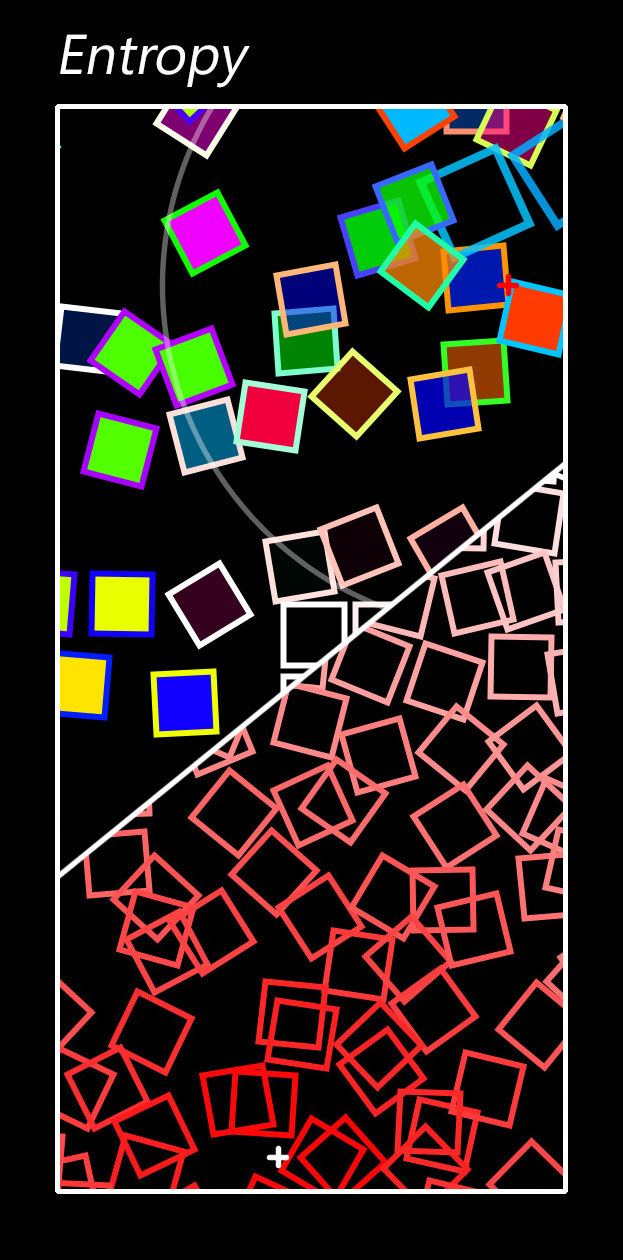
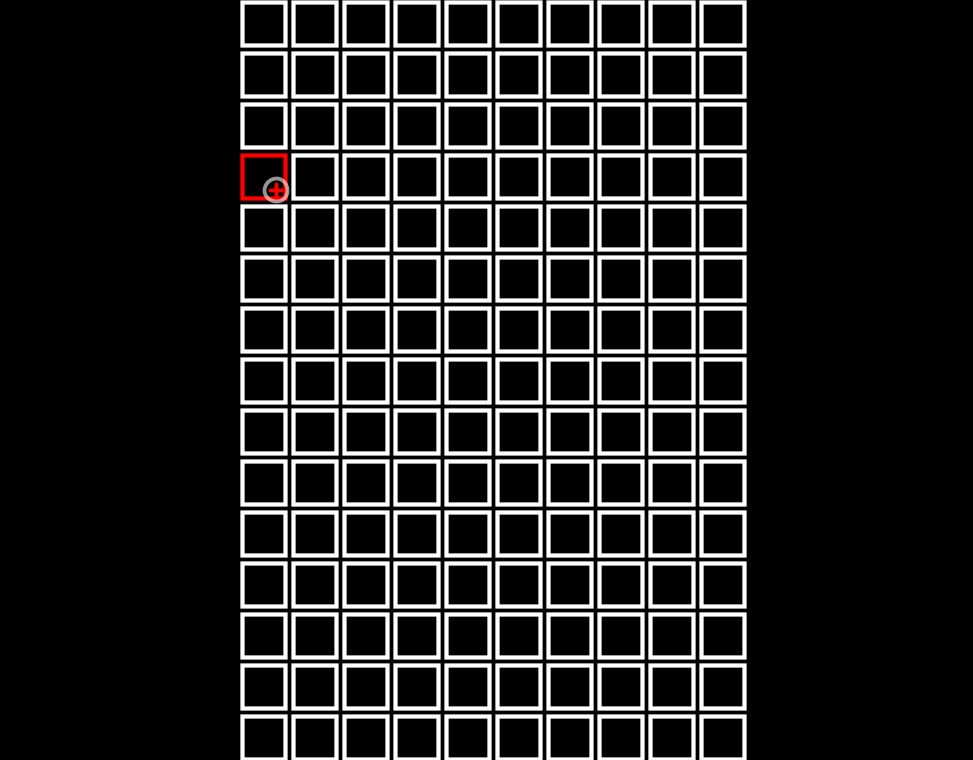
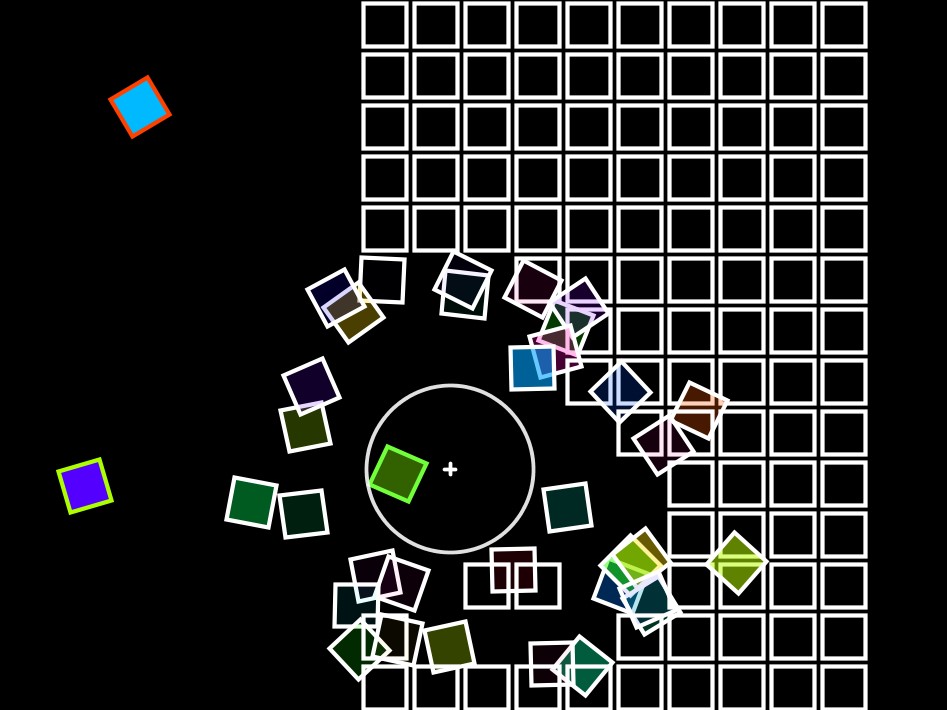
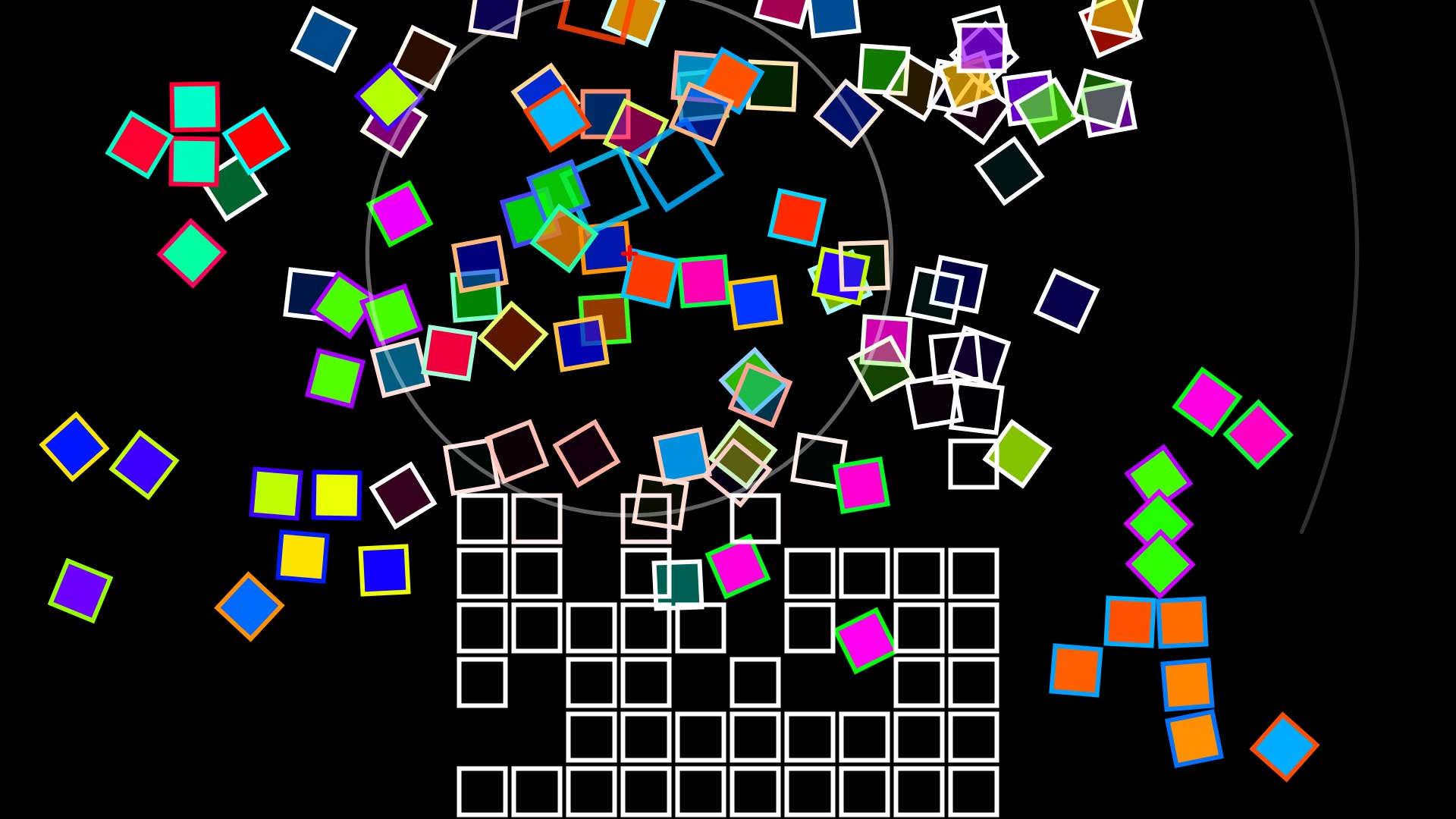
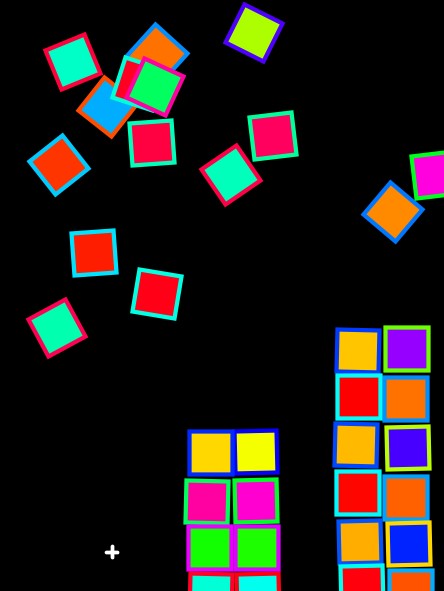
Description:
Entropy is part of a semester project that dealt with the government theme "Point. Line. Plane.". The project within Entropy was realized is engaged with the transfer and re-imagination of artworks from early computational art. In this case Entropy focuses on the digital artwork Serigraph
by Georg Nees. The project tries to communicate the topic of computational art by pedagogical means.
Entropy is part of a larger-scale team project, intended to be eventually exhibited in museums or schools. By self-experimentation, visitors will dispute with the relation of chaos and order in several ways.
The core concept in this interactive application is the contrasting relation between the real, physical world and the arithmetic system of a computer. Opposed to physical reality where everything strives for chaos, the computer world is characterized by clear structures and total order. This principle is applied by the attempt of giving geometric shapes seemingly physical behaviour and reactions. The user is able to distort the order that is imposed by the system. The shapes will follow his expectations at first, however he will soon realize the crucial difference, as the shapes will not aspire after further entropy, but rather after the recovery of the original system.
From the programming perspective, emphasis was laid on the fluent physics and behaviour of the objects. Entropy was realized using the Processing programming environment. As of the finalization of the project there have been two development branches, labelled Entropy v0.5 and v1.0. Whereas v0.5 exhibits exactly the mentioned behaviour, the rectangles in v1.0 have additionally been given color and the ability to be freed. Once a rectangle is finally freed it exhibits physical behaviour that is close to real world objects and can be dragged and arranged arbitrarily, providing certain means of creativity and self-expression.